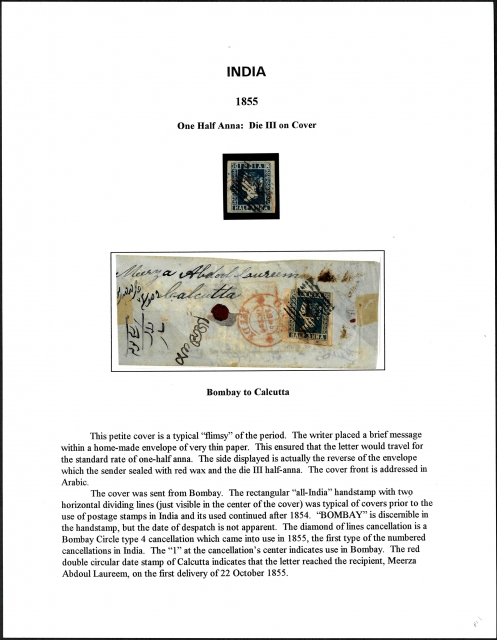This Lot is closed.
- P-Auction # 34
- Bids: 4
- Views:422
| Start Price 30000 | Estimated Price 30000-40000 |
| login, to view Hammer value | |
| Quick Description | ||||
|---|---|---|---|---|
| Full Description: 1854, Half Anna Stamp on Cover, Die III on Cover, dispatched from Bombay to Calcutta, the rectangular “all-India” handstamp with two horizontal dividing lines, good condition, Very Rare. Note: This cover and an additional stamp are excellently arranged, mounted and displayed in a collectors exhibit style. This petite cover is a typical “flimsy” of the period. The writer placed a brief message within a home-made envelope of very thin paper. This ensured that the letter would travel for the standard rate of one-half anna. The side displayed is actually the reverse of the envelope which the sender sealed with red wax and the die III half-anna. The cover front is addressed in Arabic. The cover was sent from Bombay. The rectangular “all-India” handstamp with two horizontal dividing lines (just visible in the center of the cover) was typical of covers prior to the use of postage stamps in India and its use continued after 1854. “BOMBAY” is discernible in the handstamp, but the date of despatch is not apparent. The diamond of lines cancellation is a Bombay Circle type 4 Cancellation which came into use in 1855, the first type of the numbered cancellations in India. The “1” at the cancellation center indicates use in Bombay. The red double circular date stamp of Calcutta indicates that the letter reached the recipient, Meerza Abdoul Laureem, on the first delivery of 22 October 1855.
| ||||




